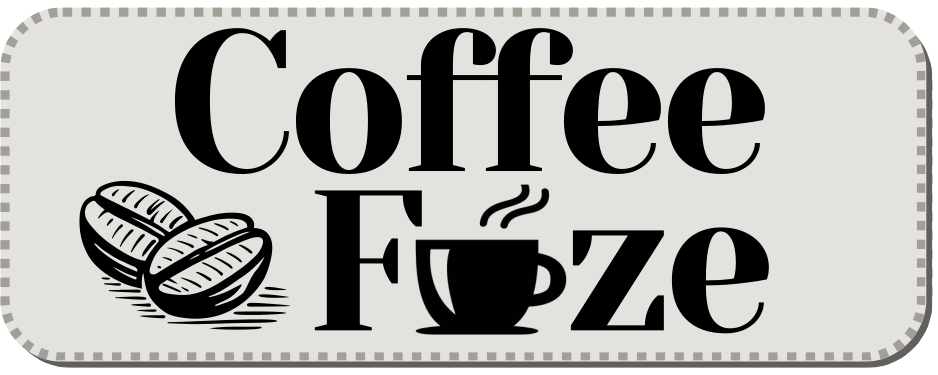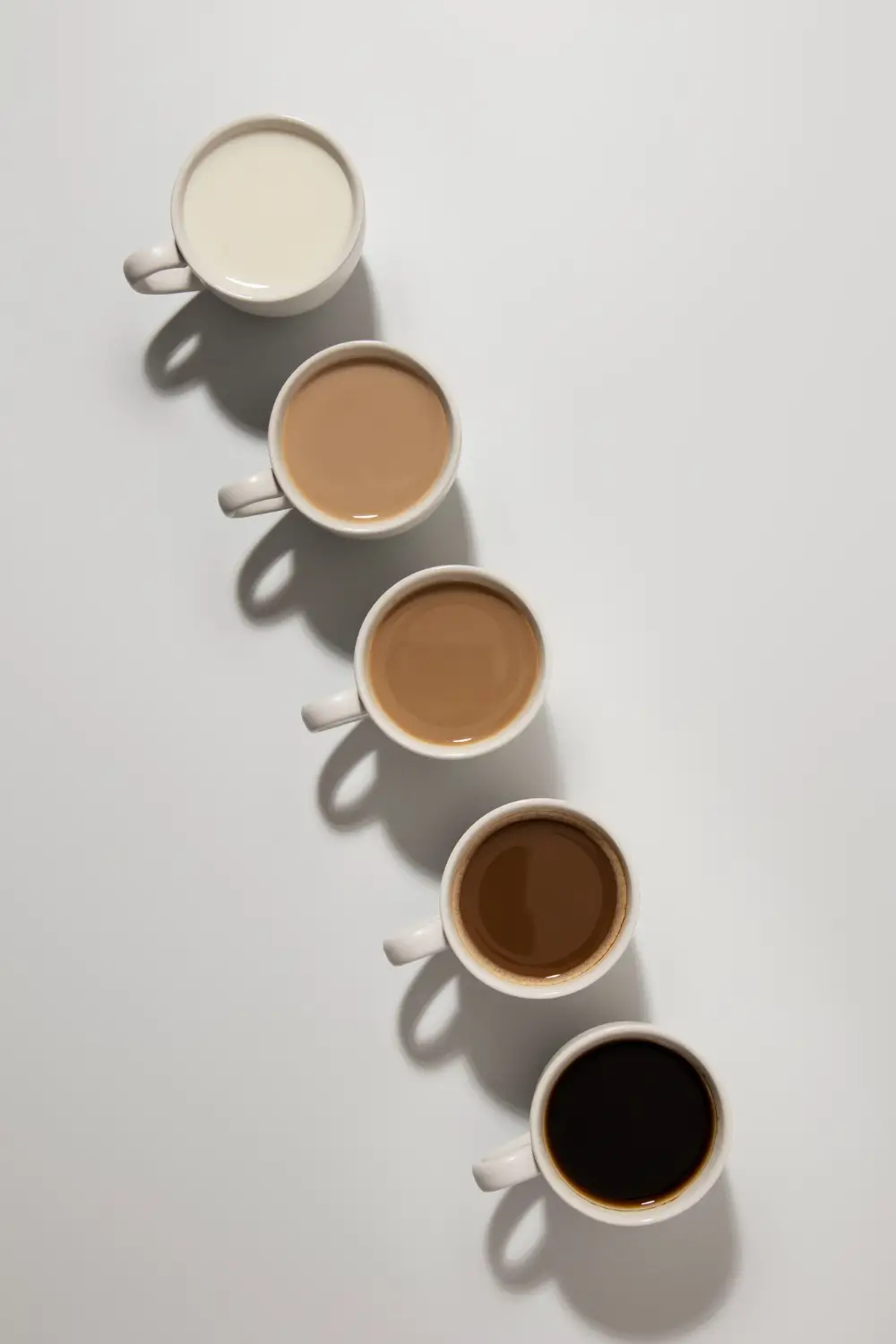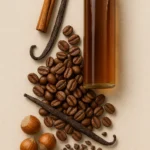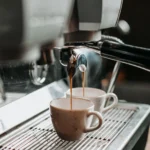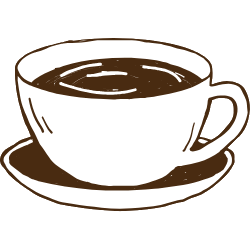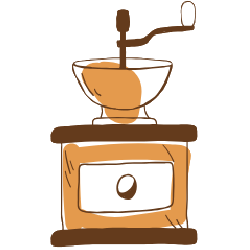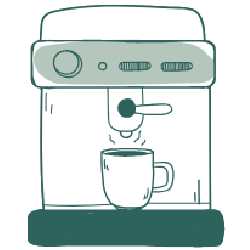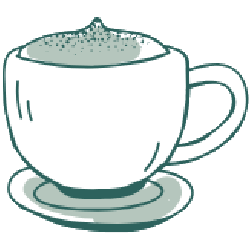Coffee is a daily ritual for so many of us, giving us that comforting feeling and a much-needed energy kick. But have you ever wondered why that boost feels so different from one cup to the next? The truth is, the caffeine levels in coffee can really change. Knowing these differences helps you get exactly the energy and flavor you want. Let’s look at what truly impacts your daily dose of caffeine, from the kind of beans you pick – like Arabica or Robusta – to how you brew it, the roast, and even your serving size.
- How do Arabica vs. Robusta caffeine levels compare?
- How do various coffee brewing methods impact caffeine levels?
- Does dark roast mean more caffeine, and what is the roast level myth?
- How do serving size and coffee type affect total caffeine levels in coffee?
- What are the factors influencing caffeine extraction in coffee?
- How can you master your coffee caffeine intake?
How do Arabica vs. Robusta caffeine levels compare?
You’ll find big differences in caffeine content by weight between Arabica and Robusta coffee beans. This really changes both the kick you get and the taste. Arabica beans usually have about 1.5% caffeine by weight. This gives you that smoother, sweeter, and more complex flavor many of us love. Robusta beans, on the other hand, pack nearly double the caffeine, sitting at roughly 2.2% to 2.7% by weight.
Think about a standard 12-ounce cup. If it’s made from Robusta, you’re looking at about 190 mg of caffeine. An identical 12-ounce cup of Arabica will give you closer to 98 mg. That higher caffeine in Robusta gives it a stronger, often more bitter flavor. That’s why you often see it in espresso blends and instant coffee – it really delivers a punch.
Arabica beans naturally have more lipids and sugar, about 60% more lipids and almost twice the sugar compared to Robusta. This chemical makeup creates those refined, sometimes fruity or floral notes you cherish in specialty coffee. So, choosing between Arabica and Robusta really sets the stage for both your coffee’s flavor intensity and its stimulating effect.
| Coffee Bean Type | Typical Caffeine Content (by weight) | Flavor Characteristics | Additional Notes |
|---|---|---|---|
| Arabica | ~1.5% | Smoother, sweeter, less bitter | Higher lipids and sugar, less caffeine |
| Robusta | 2.2% – 2.7% | Stronger, more bitter | Nearly double caffeine, used in espresso blends and instant coffee |
How do various coffee brewing methods impact caffeine levels?
Your chosen coffee brewing method really changes the final caffeine content in your cup, along with its concentration. Every method uses different settings, things like grind size, water temperature, and how long you brew it. These all affect how well caffeine gets extracted. So, the amount of caffeine you actually get depends a lot on how you make your coffee.
Take espresso, for example. It creates the highest caffeine concentration per volume, around 4200 mg per liter. This happens because high pressure pushes hot water through finely ground coffee. But here’s the thing: a typical single shot (about 30 ml) only has about 60-75 mg of caffeine. So, while it’s super strong by the milliliter, you often get less total caffeine from one espresso shot than from a big cup of regular brewed coffee.
Cold brew involves steeping coarsely ground coffee in cold water for 12 to 24 hours. This method gives you a high caffeine content per serving. You’ll usually see concentrations between 1200 and 2600 mg per liter. It often beats hot coffee because of that long extraction time and a higher coffee-to-water ratio. Many people love cold brew for its smooth taste and powerful kick.
With a French press, you fully immerse medium-coarse grounds for about 4 minutes. This pulls out moderate caffeine levels, around 740 mg per liter. You get a full-bodied coffee with a nice, balanced caffeine presence. Then there’s drip coffee, which uses gravity-based filtration. This usually gives you the lowest caffeine concentration per liter among popular methods, typically ranging from 690 to 770 mg. It’s your everyday brew, offering a milder concentration because of its moderate extraction process.
Don’t forget the stovetop espresso, also known as a Moka pot. This method produces coffee with about 2200 mg of caffeine per liter. It gives you a brew similar to espresso in strength, but generally less concentrated. You can see how much these brewing methods vary. They truly show you how important preparation is for your caffeine experience.
| Brewing Method | Approximate Caffeine Concentration (mg/L) | Notes |
|---|---|---|
| Espresso | ~4,200 | Highly concentrated, small volume |
| Cold Brew | 1,200–2,600 | Steeped long, variable ratios |
| Stovetop Espresso | ~2,200 | Similar to espresso but lower |
| French Press | ~740 | Full immersion, medium steep |
| Drip / Pour Over | ~690–770 | Gravity drip, moderate extraction |
Does dark roast mean more caffeine, and what is the roast level myth?
You’ve probably heard that darker roasts give you more caffeine, right? That’s actually a common myth. The truth is, the roast level has very little impact on caffeine content when you compare it by weight. Caffeine is quite stable chemically, so it doesn’t break down much during roasting. This means the total caffeine in each bean stays pretty much the same across all roast levels.
People often get confused because of how coffee is measured – by weight versus by volume. Darker roast beans lose more mass and expand more while roasting, making them less dense. So, a scoop of dark roast, measured by volume, might have fewer beans than a scoop of light roast. This means you could end up with slightly less caffeine overall.
If you compare the exact same weight of coffee, whether it’s light, medium, or dark roasted, the caffeine levels are surprisingly similar. Any practical difference is tiny, usually just 3–6 mg per 8-ounce cup. Most people won’t even notice that. So, pick your roast based on what flavors you like, not because you expect a bigger caffeine kick.
How do serving size and coffee type affect total caffeine levels in coffee?
How much coffee you drink, and what kind of coffee it is, really changes your total caffeine intake. Often, this matters even more than just the concentration per milliliter. Think about it: a single espresso shot is super concentrated, about 60-75 mg of caffeine. But it’s only about 30 ml. Now, compare that to a big 20 oz cup of brewed coffee, which can easily have around 415 mg of caffeine, even if it’s less concentrated per milliliter.
Specialty drinks like Americanos, Cappuccinos, and Lattes also have a wide range of total caffeine. An Americano, which is espresso diluted with hot water, gets its caffeine from the number of espresso shots in it. A 16 oz Americano, for instance, might give you about 225 mg. A 16 oz cappuccino or latte from your favorite coffee shop usually offers about 175-225 mg of caffeine. The milk in these drinks just dilutes the overall concentration, even with those espresso shots.
Counting “cups” to track your daily caffeine can be really misleading. Serving sizes and concentrations differ so much. A small diner cup could have far less caffeine than a big take-out coffee. So, if you want an accurate idea of your total caffeine intake, you need to know the specific drink’s volume and how it was brewed.
What are the factors influencing caffeine extraction in coffee?
Beyond the type of bean and how you brew it, several other things directly impact how much caffeine gets extracted from your coffee grounds into your final cup. These include grind size, water temperature, your coffee-to-water ratio, and the brewing time. Every single one of these plays a big part in how strong your coffee tastes and feels.
- Grind Size: If your grounds are finer, more surface area touches the water. This means caffeine and other compounds extract faster and more effectively. Coarsely ground coffee, on the other hand, extracts slower, giving you a less potent brew.
- Water Temperature: Hotter water dramatically increases how well caffeine dissolves and speeds up the extraction. The best brewing temperature is usually between 90–96 °C (195–205 °F). This gives you better caffeine extraction and a balanced flavor.
- Coffee-to-Water Ratio: The amount of coffee grounds you use compared to water directly decides the final caffeine concentration. If you use more coffee per amount of water – like a ratio of 1g coffee to 15-18g water – you’ll get a stronger brew with more caffeine.
- Brewing Time: How long the water is in contact with the coffee grounds directly affects how much caffeine gets extracted. Longer brewing times let more caffeine dissolve into the water. Just be careful; extremely long times can lead to over-extraction and bitter flavors.
- Uniformity of Grind Particle Size: Consistent particle size makes sure all your coffee grounds extract evenly. If your grinds are inconsistent, some particles might get over-extracted while others are under-extracted. This hurts both the flavor and the total caffeine in your coffee.
These factors all work together. When you get them right, you can precisely control your coffee’s caffeine levels and get the taste you want. Really mastering these variables can turn your everyday brewing into a bit of a scientific art, ensuring you get an excellent cup every time.
How can you master your coffee caffeine intake?
Truly mastering your coffee caffeine intake means recognizing that caffeine levels in coffee aren’t simple; they depend on so many things. From the natural genetic differences between Arabica and Robusta beans to the specific way you choose to brew, every single step affects your final cup. Your daily caffeine intake is really a personal thing, shaped by what you like and how you make your coffee.
Now you have what you need to make smart choices about your coffee. Whether you love the strong jolt of a Robusta cold brew or the delicate flavors of an Arabica drip coffee, you can consciously create the experience you want. By thinking about grind size, water temperature, your coffee-to-water ratio, and even your serving size, you truly control your caffeine. It’s all in your hands.
